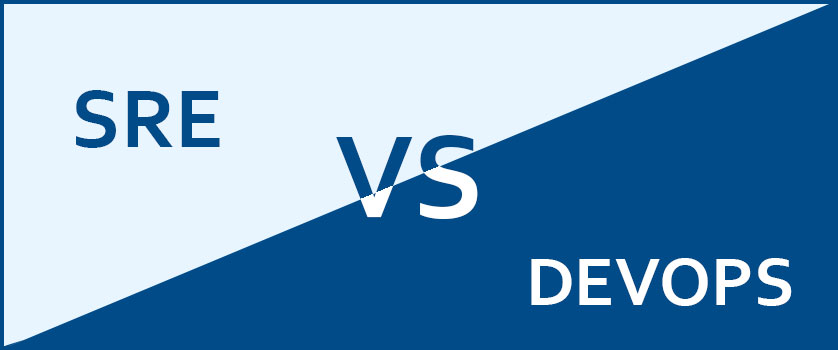


Over the years, the spectrum of software development has witnessed a drastic change, with new and more advanced technologies making the process more rapid, accurate, manageable, and consistent. DevOps and Software Reliability Engineering (SRE) are two such technologies designed to address organizations’ need for software operations management. These two similar yet distinct technologies have been coexisting, facilitating the development of reliable software and features.
However, SRE And DevOps have often been considered two competing methodologies that are vastly different from one another. Though the differences cannot be denied, it is essential to understand that SRE and DevOps often complement each other and work efficiently side by side, breaking down organizational barriers to deliver enterprise-grade software faster.
Therefore, in this article, we will explain the differences and similarities between SRE and DevOps. Moreover, we will unravel how the two overlap and facilitate the development of reliable software.
One of the leading software engineering cultures and practices, DevOps, first coined by Patrick Debois, Belgian IT consultant and Agile practitioner in 2009, emphasizes collaboration between teams, such as development, operation, and QA team. It is an agile practice that encourages communication and collaboration through the entire development lifecycle and automates infrastructure and workflow to continuously measure application performance.
The primary focus of this approach is to enable continuous development and delivery, with a frequent release rate and an automated approach to application development. By adopting the DevOps culture, organizations can achieve:
For a comprehensive discussion on DevOps, check out the complete guide here.
A unique, software-first approach to IT operation, Site Reliability Engineering (SRE) is a discipline that combines the aspects of software engineering and applies them to manage systems and infrastructure, solve problems and automate operations tasks. Introduced in the early 2000s at Google by Ben Treynor Sloss, Google’s VP of engineering, SRE's main objective is to create scalable and highly reliable software systems through deeper collaboration and proactive optimization of redundancies and monitoring and alerting practices.
It is a valuable practice that helps manage large systems through code and find a balance between releasing new features and ensuring their reliability. Like DevOps, SRE structure helps teams alleviate siloing, existing between the developers and IT professions to reduce the stress put on the operations team.
In short, SRE is not a replacement for DevOps but an extension that helps make the former better. Moreover, like DevOps, SRE also relies on automating routine operational tasks and standardization across the software lifecycle.
The principles that are the foundation of Site Reliability Engineering are:
As stated earlier, SRE makes DevOps better.
DevOps has five key pillars of success that together help organizations improve results and achieve consistent growth. SRE plays a critical role by satisfying these pillars through various methods to further make software development faster and more reliable while promoting collaboration between the teams involved in the process. These pillars are:
While Site Reliability Engineering (SRE) and DevOps share core principles and concepts there are still certain differences between them, which are highlighted in the following table:
| Parameter | SRE | DevOps |
| Essence |
Set of practices and metrics that combines aspects of software engineering and operations to operate mission-critical systems. |
Set of practices and a culture designed to bridge the gap between the development and operations team through collaboration. |
| Focus | How can something be done? | What can be done? |
| Aim |
Deals with the post-failure situation to ensure maximum uptime and identify failures for long-term reliability. |
Deals with the pre-failure situation to ensure issues in the system do not lead to system crashes or downtime. |
| Objective |
System availability and reliability. |
Continuous and rapid product development and delivery. |
| Measures |
Measures service level indicators (SLI) and service level objectives (SLC). |
Measures failure and success rate over time. |
| Tools & Automation |
Focused on using consistent technologies and information access. |
Encourages automation and technology adoption. |
| Change |
Expects small changes at frequent intervals. |
Changes are implemented gradually. |
Now that we understand the difference between SRE and DevOps, we must also comprehend that these two software engineering technologies often work together to create a reliable and secure software product. Hence, finding the better technology is impossible, as the two constantly overlap each other.
The increasing demands for software convenience and reliability have spurred organizations to adopt leaner and more efficient software development and maintenance practices like SRE and DevOps. Two highly critical methodologies, SRE and DevOps, are working closely to bridge the gap between the teams involved in software development. Though different in their processes and objectives, SRE and DevOps share core principles that enable teams to proactively build reliable services, which further leads to greater operational efficiency, business value, and overall happiness for everyone involved.